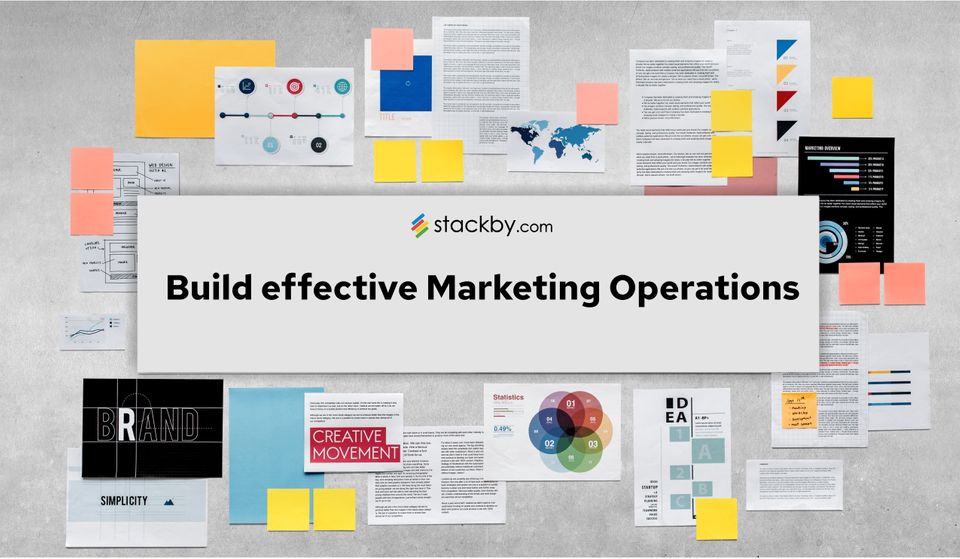How to Create a Video Content Calendar That Boosts Engagement
Learn how to organize, plan, and automate your video strategy in 2025 with a video content calendar. From ideation to publishing—plan smarter, post better.

Why Video is the Reigning King of Content in 2025
In reality, video is today not just a trend; it is by far the most engaging content medium on the internet. From short-and-sweet TikToks to Instagram Reels and even longer how-to videos on YouTube, video delivers far greater reach, engagement, and conversions than static posts.
However, the problem here is that many creators and marketing teams manage their video content with sometimes-diverse notes, crummy old spreadsheets, or even last-minute brainstorming sessions. This makes one miss opportunities, sporadic postings, and disoriented campaign management inevitable.
One solution: a comprehensive and strategic video content calendar. With the right system in place, the entire process of content creation can be streamlined into timely publishing, one cohesive unit against the marketing goals.
As of This Month, In the Lucrative Era of Digital Marketing, Video Content Takes the Edge Over Others. Be It YouTube Tutorials, Instagram Reels, or TikTok Challenges-Videos Have Captivated the Audience Like No Other Medium. Without proper scheduling, your interesting video ideas can get stuck. If you post unpredictably, have scattered ideas, and don’t plan well, your content can suffer.
Use the Video Content Calendar to help organize your creative ideas. By Pre-Planning Video Content, You Can Maintain Consistency and Work Toward Marketing Objectives to Engage the Audience Efficiently. Stackby, For Example, Facilitates This Entire Procedure by Providing Customizable Templates and Collaboration Options to smooth your Video Planning.
And tools like Stackby make this seamless, collaborative, and fun. Let's dive in.
What is a Video Content Calendar?
A video content calendar, which is a scheduling tool, helps you plan, organize, and track your video content on multiple platforms. It's a visual road map that tells what content is going to be published, when, and where.
For more pre-built content planning templates, see our templates page.
Importance of a video content calendar:
- Keeps posting consistently: Consistency in uploading will engage the audience constantly and improve the favorability from the algorithm.
- Supports marketing goals: Align video content with the wider marketing campaigns and promotional activations.
- Tracks the performance and repurposing opportunities: One tracks metrics of high-performing content to identify potential for repurposing.
Examples:
- YouTube Channels: Weekly tutorials or vlogs.
- Instagram Reels: Daily short-form content with Instagram content calendar planning.
- TikTok: Videos based on current trends.
- LinkedIn Video Marketing: Professional insights shared along with company updates.
Why You Need a Video Content Calendar in 2025
We live in a time where the digital content globe continues to grow rapidly. The audiences are hoping for access to timely, high-quality video content tailor-made to be of interest to them. This is why a video content calendar is essential.
- Audience Expectations: Consistent, high-quality content builds a loyal and trusting relationship with the audience.
- Video Creator : An AI video creator helps you meet those expectations by cutting production time, letting you focus on maintaining the consistency your calendar demands.
- Align With Trends: Plan around emerging trends and events to be proactive in your efforts.
- Platform Diversity Management: Distribution of content to multiple platforms will be handled efficiently.
- Team Coordination: Will foster greater synergy among content creators, editors, and marketers through effective project management.
Goodbye to Last-Minute Madness: Less randomness means more comfort and less survival stress.
If you want to create a useful video content calendar, the following must be taken into account:
- Content Topic/Title: Defines what each video is about.
- Platform: The place where the video is to be published (for example, YouTube, Instagram).
- Publishing Date: Specifies an actual release date.
- Video Type: Specifies the format (for instance, tutorial or product review).
- Status: Monitoring the workflow (such as ideation, scripted, edited, published).
- Assigned Team Member: Specifies the individuals involved.
- Call-to-Action: Indicates what responses are desired from the viewer.
- Target Keywords/Hashtags: These enhance searchability.
- Links: Direct access to the final videos, assets, and other related materials.
Create a Powerful Video Content Calendar with Stackby
Stackby isn’t just another spreadsheet tool, it’s a no-code platform that combines the simplicity of a spreadsheet with the power of a relational database. You get a fully customizable space where you can plan, manage, and automate your video content from start to finish.
Whether you’re a content creator, marketer, or part of a video production team, Stackby lets you centralize your video planning, streamline team collaboration, and automate repetitive tasks, all in one place.
You can either use one of Stackby’s ready-to-use templates or build your own calendar from scratch. In this guide, we’ll walk you through creating one from scratch for complete customization.
Step 1: Start with the Video Content Calendar Template
- Create a New Stack: Think of this as your project folder.
Add Tables:
- Content Pipeline – to manage ideas and video progress.
- Assets & Media – to organize files, thumbnails, and footage.
- (Optional) Performance Metrics – to track views, engagement, and performance post-publishing.
Define Key Columns:
- Title (Text) – Name of your video.
- Category (Single Select) – Type of video (e.g., tutorial, vlog, promo).
- Platform (Multi Select) – YouTube, Instagram, LinkedIn, etc.
- Publish Date (Date & Time) – Scheduled release.
- Status (Dropdown) – Idea, Script, In Progress, Ready, Published.
- Assigned To (Collaborator) – Person responsible.
- Media Links (URL) – For external references or files.
- Thumbnails/Assets (Attachment) – Upload visuals.
- Performance Metrics (API) – To connect YouTube Analytics and more.
Step 2: Customize Fields to Match Your Workflow
Stackby has 30+ field types, so your calendar can fit how your team works.
- Status Dropdown – Track each video from idea to published.
- Team Member Assignment – Use the Collaborator field to assign videos to team members.
- Media Links & Thumbnails – Attach resources like reference docs, visuals, and drafts.
- Performance Tracking – Pull data like views, watch time, and likes from YouTube in real-time with API connectors. Checkboxes, Ratings, Notes – Add custom fields for reviews, feedback, and prioritization.
Step 3: Use Multiple Views for Better Content Planning
Switch between views depending on what you need to do. Stackby gives you full control over how you see your data.
- Grid View – Your main dashboard to manage and edit all video content.
- Calendar View – See when each video is going live with your marketing calendar.
- Kanban View – Organize and monitor the content production process by status using Kanban board software.
Custom Form View – Have team members submit new video ideas directly into your stack with a branded form.
Gallery View – Showcase video thumbnails and assets.
List and Timeline Views – Get linear and time-based views for project tracking.
Step 4: Automation and Integration
Stackby Internal Automation:
- Set up Slack or email notifications to remind your team of upcoming publishing dates so nothing gets missed.
- Automatically update content status after deadlines pass—no manual intervention required.
- Connect to YouTube Analytics to pull in real-time video performance data—views, likes, watch time, into your content calendar.
- Integrate Google Drive to attach and preview documents, images, or video files in each content record.
- Sync Trello boards with Stackby to bring task progress and collaboration updates into one place, no more switching between tools.
- With over 50+ integrations, Stackby connects your favorite apps so you can plan, track, and manage content without leaving your workflow.
Step 5: Collaborate in Real-Time
Work with your team as if you’re sitting next to each other, even when you’re not.
- Share the stack with team members and set role-based permissions.
- Use row-level comments for quick updates and discussions.
- Create custom checklists, set due dates, and get notified as tasks move forward.
- Explore the Apps Marketplace and add dashboards or power-ups like real-time analytics widgets, checklists, or reminders relevant to your video content calendar.
Step 6: Best Practices for a Video Content Calendar
- Plan Ahead – Schedule videos at least a month in advance using content calendar templates.
- Repurpose Smart – Use long-form videos to create short snippets for different platforms.
- Campaign Alignment – Align your video content with your marketing campaigns or product launches.
- Use Analytics – Use Stackby's integrations to track performance and adjust your content strategy.
- Batch Your Videos – Film and edit in batches to save time and consistency.
- Review Often – Keep your calendar up to date with weekly or daily reviews through effective workflow management.
Get Started with Stackby’s Free Video Content Calendar Template
Getting started with video content planning with Stackby is easy.
Sign Up: Register a new account on Stackby for free.
Access the Template: Use the Video Content Calendar Template to start planning.
Customize: Modify fields according to your workflow, and invite your team to collaborate.
Start planning your video content with Stackby – It’s free.
Need to manage media equipment or inventory? Use our asset management template.
Stackby vs. Other Content Calendar Tools
For those considering alternatives, you might want to explore Airtable alternatives or Trello alternatives to see how Stackby compares to other popular tools.
Conclusion: Don’t Just Publish. Plan with Purpose.
In the world of digital content, a person could get away with random posting in this fast-paced world of digital content. A high-quality and well-synchronized video content calendar is the basis of consistency, quality, and results.
A strategic calendar can be your ace, whether you're a lone powerhouse spinning plates from one platform to another or a marketing team working on global campaigns.
Better still: Stackby. Not just yet another tool, it's your secret weapon for clarity, speed, and collaboration in content. With stackby, an excel-like platform with versatility and user-friendliness, planning for video content becomes much easier.
An organized calendar for video content represents a pathway to success in this dynamically fluctuating digital landscape. It helps keep the content consistent, aligns with the sought marketing objectives, and improves audience engagement through proper social media calendar management.
No more scattered notes. No more missed deadlines. No more chaos.
With Stackby, you won't just be creating content; it will help you to form replicable data-driven video marketing strategies through comprehensive marketing analytics.
So, will you get primed to play harder with content?
You can consider anything better into account. A powerful and flexible platform that would make into dreamy bliss all the nightmares of video content planning. Customizable templates, real-time collaboration tools, and an automation suite allow you to keep your focus on creating great content and not on logistics.
Plan Smart. Collaborate Better. Publish with Purpose. Try Stackby for free today!
This article was originally published in May 2025 by Stackby Content Team. The most recent update was in July 2025.




![10 Best Free Database Templates for Marketing Agencies in [2025]](/blog/content/images/size/w960/2024/03/stackby-Database-templates-for-marketing-agencies-1-blog-post-2.jpg)